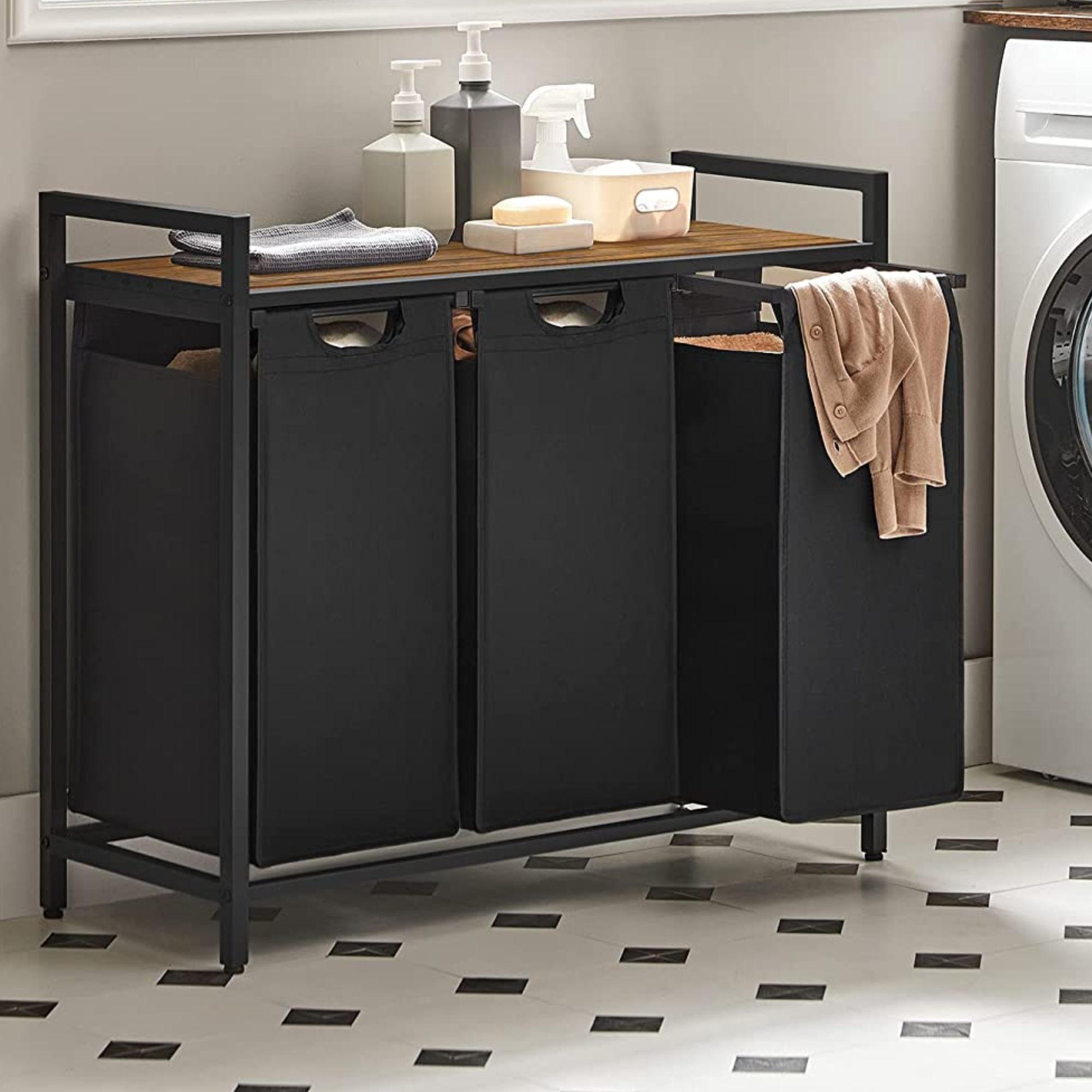How to do laundry – a step-by-step guide to washing and drying your clothes
Keep clothes looking their best with our expert guide on how to do laundry

So you think you know how to do laundry… throw clothes into the drum and switch the washer on, easy enough, right? Well, yes, sort of, but if you want to get the most out of your efforts – and your clothes – we’d suggest learning how to do laundry the right way. It’s easier than you might think, and will feel like less of a chore, too.
While they’re lovely to spend time in, even the most stylish of laundry room ideas won’t guarantee a successful wash. The key to keeping your garments and linens looking and feeling in tip-top condition is all in the process. From sorting clothes and loading the drum to making sense of your washer settings, master each step and you’ll find the whole task, from start to finish, becomes easier, more efficient and perhaps even, dare we say, enjoyable.
So, whether you’re a laundry enthusiast, a reluctant laundromat regular, or you’re still trying to work out what the delicate setting on your tumble dryer is for, we’ve put together a step-by-step guide on how to do laundry, packed with top tips and expert advice that covers the basics and so much more.
How to do laundry
From doing the laundry without detergent to the laundry room essentials you need, we've covered everything you need to know about doing it right.
1. Read the label
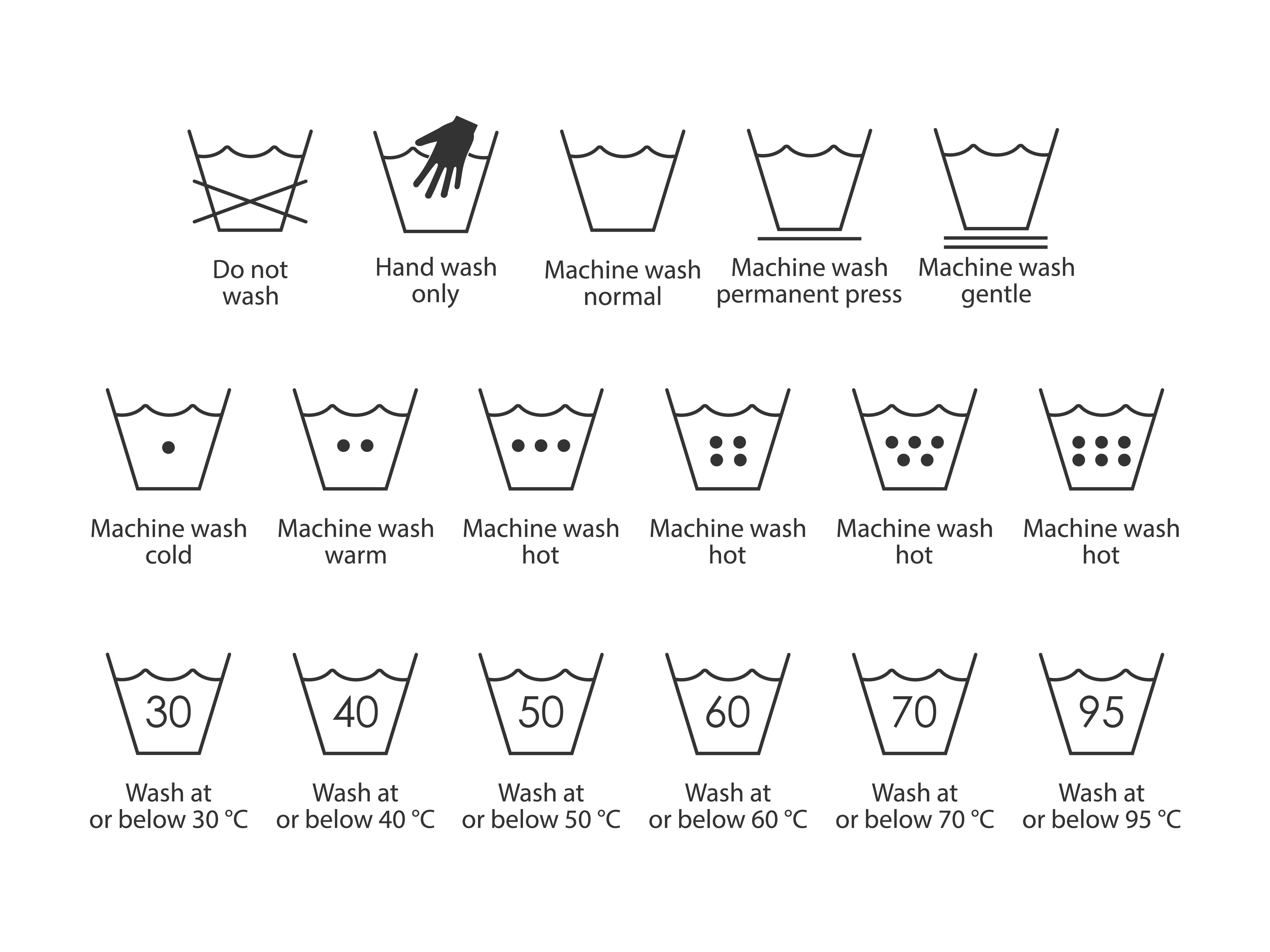
Rule number one is to check out the laundry symbols on each of your garments’ care labels – and stick to them. If the label’s missing or has been cut out and you’re not sure on the fabric, err on the side of caution and opt for the gentlest washing and drying cycle.
We know it’s tempting, but if an item says ‘hand-wash’ or ‘dry-clean’ on the label – don’t put it into the washer, even on a delicate setting. You’ll spend less time and money getting them washed properly than you will having to replace them!
2. Sort into separate washes
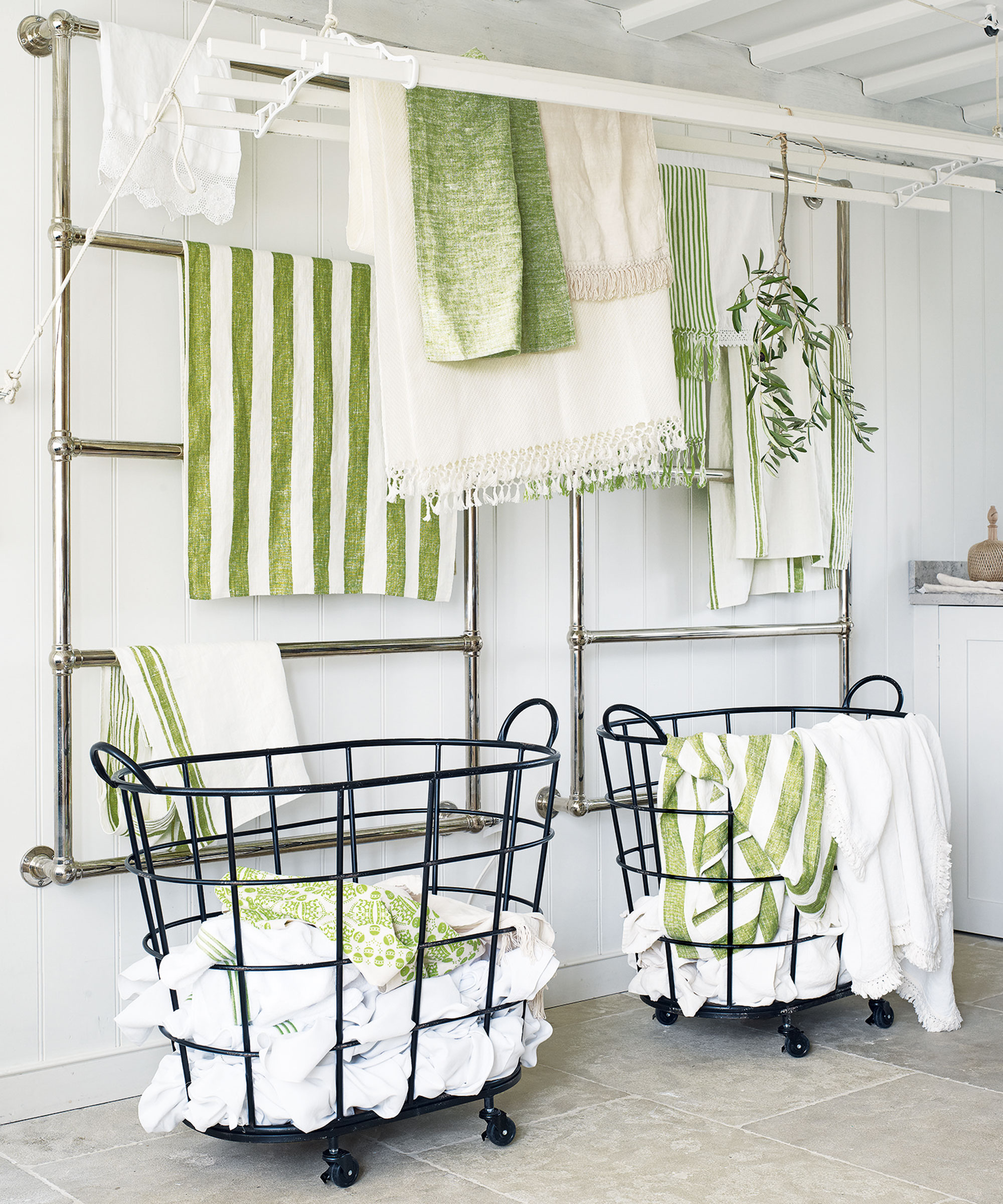
Knowing how to sort clothes for laundry is essential if you want to keep items in tip-top condition. Start by removing any heavily-stained items. Whether it’s muddy sports kit, sweaty gym wear or soiled baby clothes, these should always be washed separately.
Next, separate by color: darks, lights and multi-colors. To find the right pile for garments with multiple colors across categories (black and white stripes, for example), carry out a quick test to ensure the darker shade doesn’t bleed. Place a drop of water on the darker fabric and blot with a paper towel. If the color doesn’t come off, you’re fine to wash it with the lights load. ‘I also like to use a reusable color catcher to be on the safe side’, says Insta ‘cleanfluencer’, Laura Mountford, @lauracleanaholic.
Finally, go through each pile and sort again, this time by fabric type. This will dictate what cycle you set your wash to. If you’re unsure on anything, refer to the garment care label, it will have a recommended temperature to wash at. It’s ok to combine different fabric types to make up a full load – just be sure you select a cycle that suits the most delicate of items in the drum.
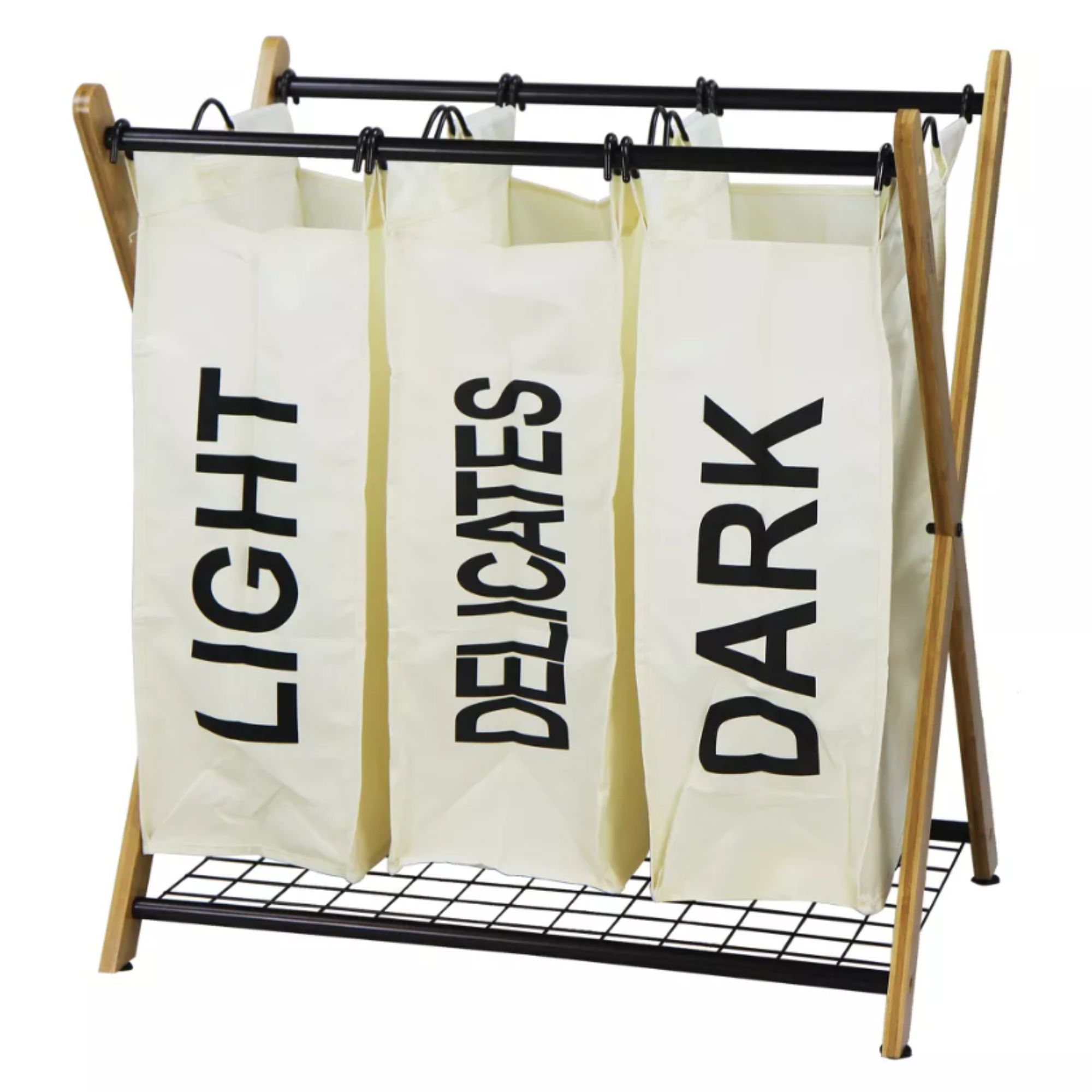
This clever hamper makes it easy to sort your laundry. The sections are labelled and easily lift out of the simple bamboo frame ready to go straight into the washer.
3. Pre-treat stains
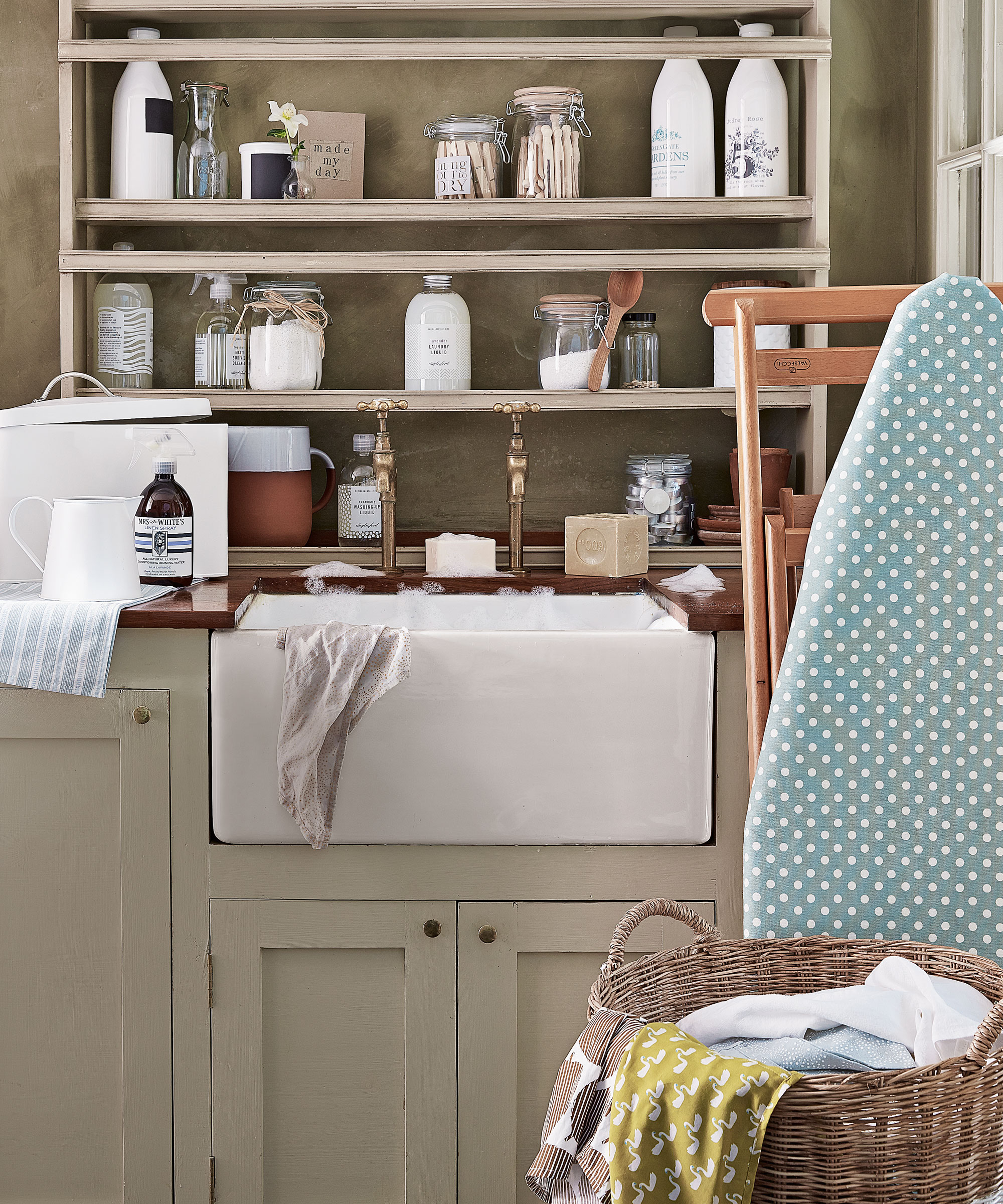
It may feel like an extra hassle, but pre-treating stains can make all the difference – you’ll thank yourself later, we guarantee. How you do this will depend on what type of stain it is and what fabric you’re dealing with.
If you’ve spotted a few faint mud stains on a t-shirt and don’t pretreat them, then your garment should stay in relatively good condition, however, if you neglect deeper stains, such as blood, ink, or food stains, they’re likely to remain permanently soiled, say insider experts at Marks & Spencer.
‘Start by separating the stained clothes and soaking them thoroughly, before applying washing detergent directly on the stain. Soaking them in vinegar and warm water can also help bring out the stains further.'
4. Pick the right products

With so many detergents on the market, it can be hard to know where to start when picking the best one for you. There’s no hard and fast rule, but in our view, the more natural you can go, the better, particularly if you’re prone to sensitive skin. If you want to know exactly what’s going into your washing – and ensure it’s eco-friendly – you could learn how to make laundry detergent yourself; it’s surprisingly easy to do.
If you’ve opted for liquid detergent, it’s crucial that you follow the instructions on the bottle; using too much or too little can have a detrimental effect on your washing, and your washing machine for that matter. On that note, it’s a good idea to familiarize yourself with how to clean a washing machine, to ensure it’s giving you optimum results.
‘If you’re using them, laundry pods should always be placed at the bottom of the machine before you put the clothes in, to allow the water to penetrate the pod first and release the detergent inside. Softener can also be placed directly into the drum to stop it clogging up your machine drawer’, says professional home organizer, Emma George of Declutter With Emma.
Diluting your usual liquid detergent is often recommended for delicates, but we’d suggest you opt for a specific hand-wash version – it’ll be much kinder on your clothes. If you’re hand-washing silks, consider adding a few drops of your hair conditioner to the final rinse for extra softness.
While fabric conditioner isn’t a necessity, it is a great way of retaining softness, and can help to keep your clothes in good condition for longer, too. However, there are certain fabrics it doesn’t do well with; flame-resistant (usually baby and kid’s clothes) and water-repellent fabrics, for example. Try these all-natural wool dryer balls, at Walmart, instead.
Whether you’ve got a dedicated laundry room or not, it’s worth giving some thought to how you’re going to store your products, too. Neat, tidy and well-organized laundry room cabinet ideas make for a much more efficient – and nicer – laundry experience overall.
5. Select the right cycle
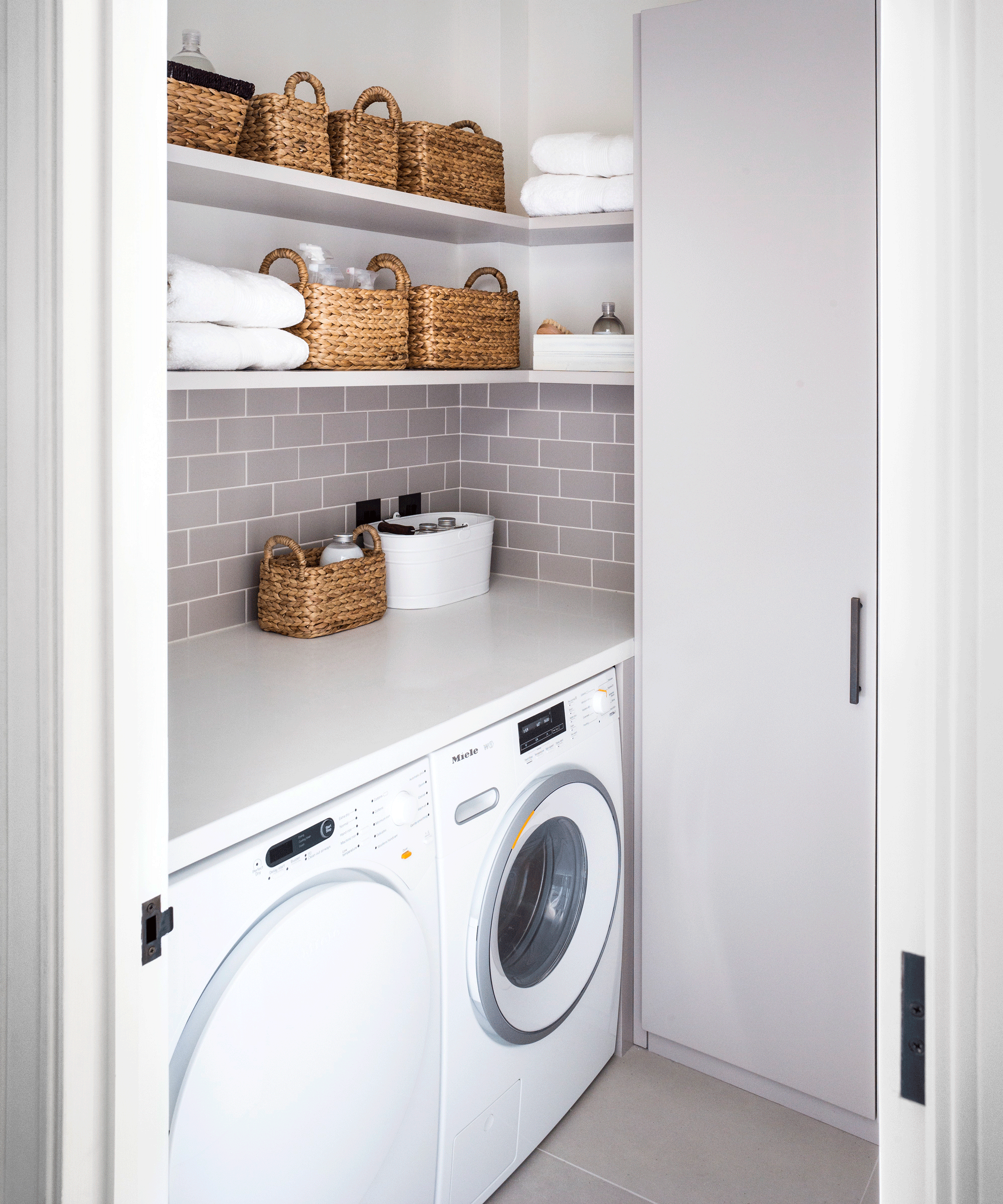
These days, most washing machines are pre-programmed with a wash time, temperature and spin speed, which can speed up the process, assuming you’ve sorted your items correctly. Cycles tend to vary from one machine to another, so read through your user manual – or ask at the laundromat – to get a better understanding of the differences between them.
While hotter temperatures tend to be the default setting on most machines, it’s worth bearing in mind that they’re simply not necessary for your usual day-to-day laundering (even when washing whites) and can be pretty tough on your clothing. To save on energy bills – and decrease your carbon footprint – reserve them only for heavily stained items (assuming the fabric can take the heat) and consider making these washes shorter than usual to reduce your energy expenditure even further.
6. Load items into the washer…
The key thing when putting clothes into the washer is to ensure you’re not overloading the drum. Squeezing too much won’t allow space for the water and laundry liquid to combine and wash the clothes properly, so it’s really important.
It’s always worth giving each item a quick once over before putting it into the washer, too. Look for missed stains that might need pre-treating, check pockets for tissues, receipts or mislaid items, and close all fastenings so they don’t catch on anything. If you’re dealing with delicates, put them inside a net laundry bag for extra protection. ‘Net bags are also useful for keeping pairs of socks together – it’s such a time-saver!’, adds Emma George.

Emma is a professional home organizer, working with clients to declutter their belongings, plan their spaces and create organizational systems in their homes to restore balance and support their everyday living.
7. …and remove them – promptly
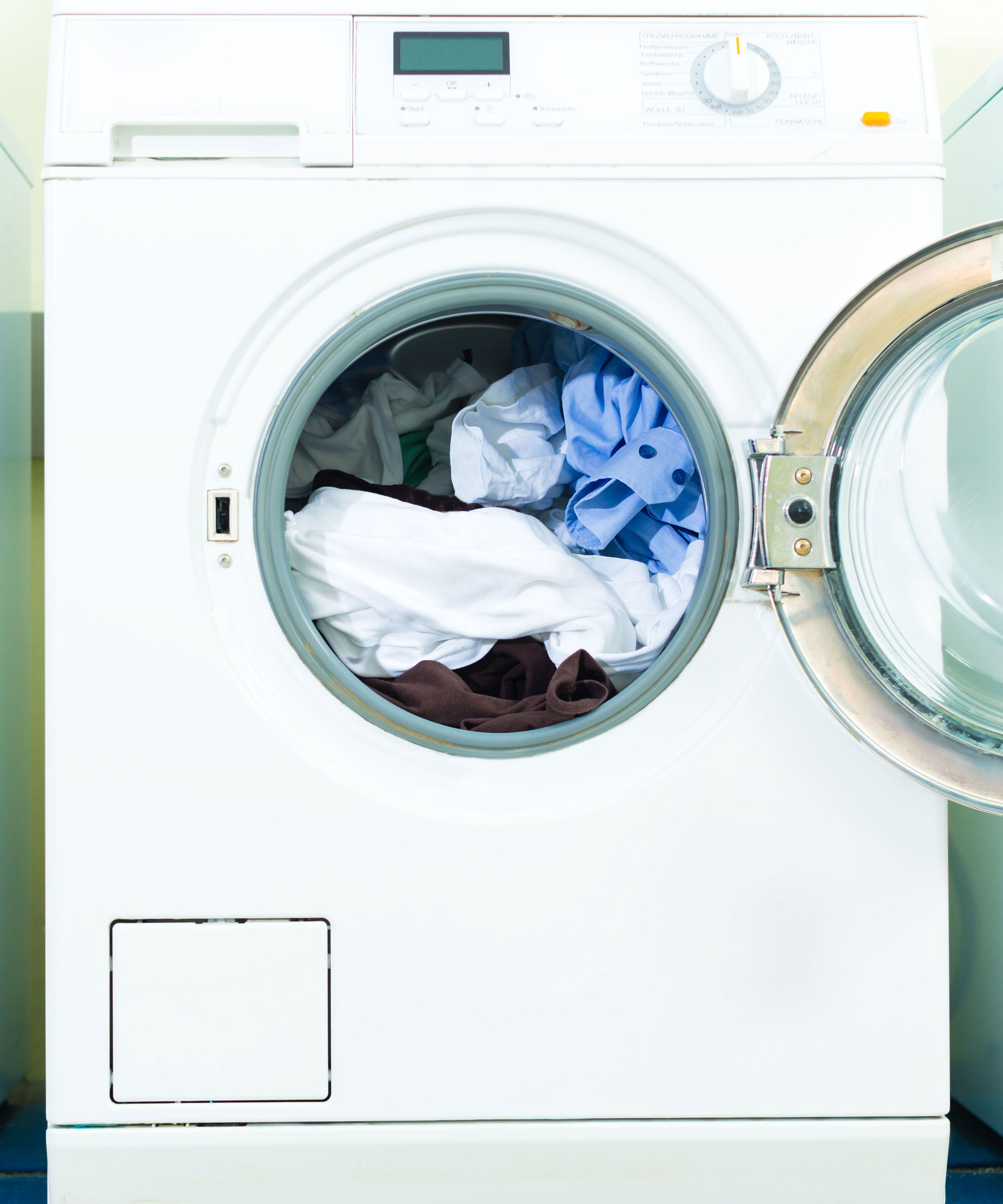
‘Remove items from the washing machine as soon as the cycle finishes to reduce creasing and prevent items smelling musty’, advises Laura Mountford. Rather than throwing everything into the dryer, check garment care labels first to see which items are suitable for tumble drying, and at what temperature, then sort into piles accordingly’.
8. Decide how to dry

Even though it takes longer, experts generally recommend air drying where possible, and in the case of delicates - always. Hanging them soaking wet can stretch them out of shape, so lay them between two towels first (whizzing smaller garments in a salad spinner is a handy hack) to release excess moisture, then lay flat across an airer to dry.
If you do decide to tumble dry, ensure the items you’re putting in can take the heat (literally) – again, check the care labels and refer to a tumble dryer temperature guide. Always use the shortest time and lowest heat cycle possible to prevent shrinking. You can also skip dryer sheets and use a cheap essential oil dryer hack for luxurious-smelling linens, towels and clothing.
Folding your clean clothes and putting them away as soon as they’re dry will help to prevent wrinkles, which in turn cuts back on the amount of ironing required – bonus.
Master the settings
Pre-set cycles on your machine include variations on the following: cycle length, cycle speed (or ‘spin’) and water temperature. Understanding the effect these have on your clothes and the cleaning process will ensure you’re getting the most out of your machine – and means you can adjust the settings if you want to.
Delicate cycle
The shortest and most gentle cleaning cycle, this is the closest you’re going to get to a ‘hand-washing’ effect. Reserve it for delicate items; wool, silks, cashmere, delicate synthetics, and so on. Most machines use cold water, but if yours defaults to warm, we’d advise overriding it.
Normal cycle
This lengthy, high-speed cycle is primed for cleaning everyday laundry items – cottons and linens, as well as durable synthetics such as towels, t-shirts, socks and underwear. When it comes to selecting a temperature, bear this in mind:
‘While it’s generally true that the longer and hotter the wash, the better the clean, advancements in modern laundry detergents mean that cooler temperatures are just as effective for everyday washes. Unless your items are particularly dirty, switch from 40 to 30 degrees – often even 20 is all you need’, advises Laura.
When in doubt on temperatures, always check the garment label.
Permanent press cycle
Shorter and more gentle than the normal cycle, this one uses warm water and a lower spin and is recommended for synthetics. It’s ultimate purpose is to reduce wrinkles in clothes, so can be handy for washing clothes made of natural fibers that tend to crease easily – dress shirts and pants, for example.
Heavy-duty cycle
Bulkier, more durable items (washing towels, bed linens, heavy sports clothing etc) will require a longer, hotter cycle to ensure they’re properly sanitized. Look out for a ‘heavy-duty’ setting on your machine.
These are likely the cycles you’ll find yourself using day-to-day, but there’s few others you can also use to boost your laundering. If you're dealing with particularly dirty clothes, opt for a ‘pre-wash’ setting to give them an extra soak before their usual wash. Alternatively, tack an ‘extra rinse’ onto the end to ensure all dust and dirt has been flushed out (also handy if any household members suffer from allergies). ‘Rinse and spin’ removes moisture from items without the need for detergent – handy if you’re rinsing out bathing suits for beach towels.
Choose the right dryer temperature
While it’s true that the hottest dryer setting will dry your clothes the fastest, there are other factors to consider. After all, not every fabric can handle the heat, and racking up regular spins can have a pretty big impact on your energy bills, too.
Once you’ve established the items that can be tumble dried, check their individual care labels for what temperature they can handle – low (usually stretch fabrics, such as leggings or activewear), medium (most everyday clothing) or high (reserved for heavier fabrics, such as towels etc). Always stick to the lowest recommended temperature for a garment.
Grouping items by temperature, rather than throwing everything in together, is the most efficient way of using a drier. Heavier items such as jeans and towels will take longer to dry than t-shirts and baby clothes, for example, so you run the risk of over-drying the latter and running the risk of shrinkage.

Ways to do laundry less often
It’s no surprise laundry feels like a chore. Most of us do it at least once a week, and those of us with big families and small children are likely throwing loads in daily. But is it really necessary? There’s no doubt that fewer washes would make life much easier, not to mention is far better for the environment and your clothes. It may seem like an impossible task, but with a few simple changes in habit, it’s surprisingly easy to cut back.
We’re all guilty of throwing outfits into the laundry basket at the end of each day, but there’s no harm in wearing something more than once – air items overnight to boost freshness or use a fabric-freshening spray, like this one at Amazon. Stains are no excuse either, simply spot-clean as you go. Wait until you have a full load before you put a wash on, too.

How do you do laundry without detergent?
While stain-busting detergents may feel like a quick and easy way to clean clothes, there’s other, more natural alternatives you can try that are just as effective - and better for the environment, too. In fact, most of them you’ll likely already have, sitting on your pantry shelf.
‘One of the best ways to clean clothes without detergent is by using natural, eco-friendly alternatives like baking soda, borax and white vinegar in laundry’, says Jen Stark, founder of successful interior and homemaking blog, Happy DIY Home. Baking soda can be used as a presoak agent to help remove stains and soften clothes, while vinegar can also be added to the prewash cycle in order to brighten whites and remove odors. Borax offers an extra boost of cleaning power’.
‘You may also want to consider using natural store-bought laundry soaps like Castile soap, which are free of harsh chemicals and fragrances. To give it extra cleaning power, add ½ cup of borax to the wash cycle, advises Jen Stark.
Alternatively, consider planet and purse-friendly Ecoegg. It replaces detergent using essential oil-fragrance pellets inside a reusable capsule to produce natural foam that lifts dirt from your clothes.
If you really can’t bear to part with detergent, at least swap to a greener version. A firm favorite in many eco-conscious households, Method laundry detergent, at Target not only look and smell good, but do just as good a job of cleaning clothes as any chemical-based alternative.
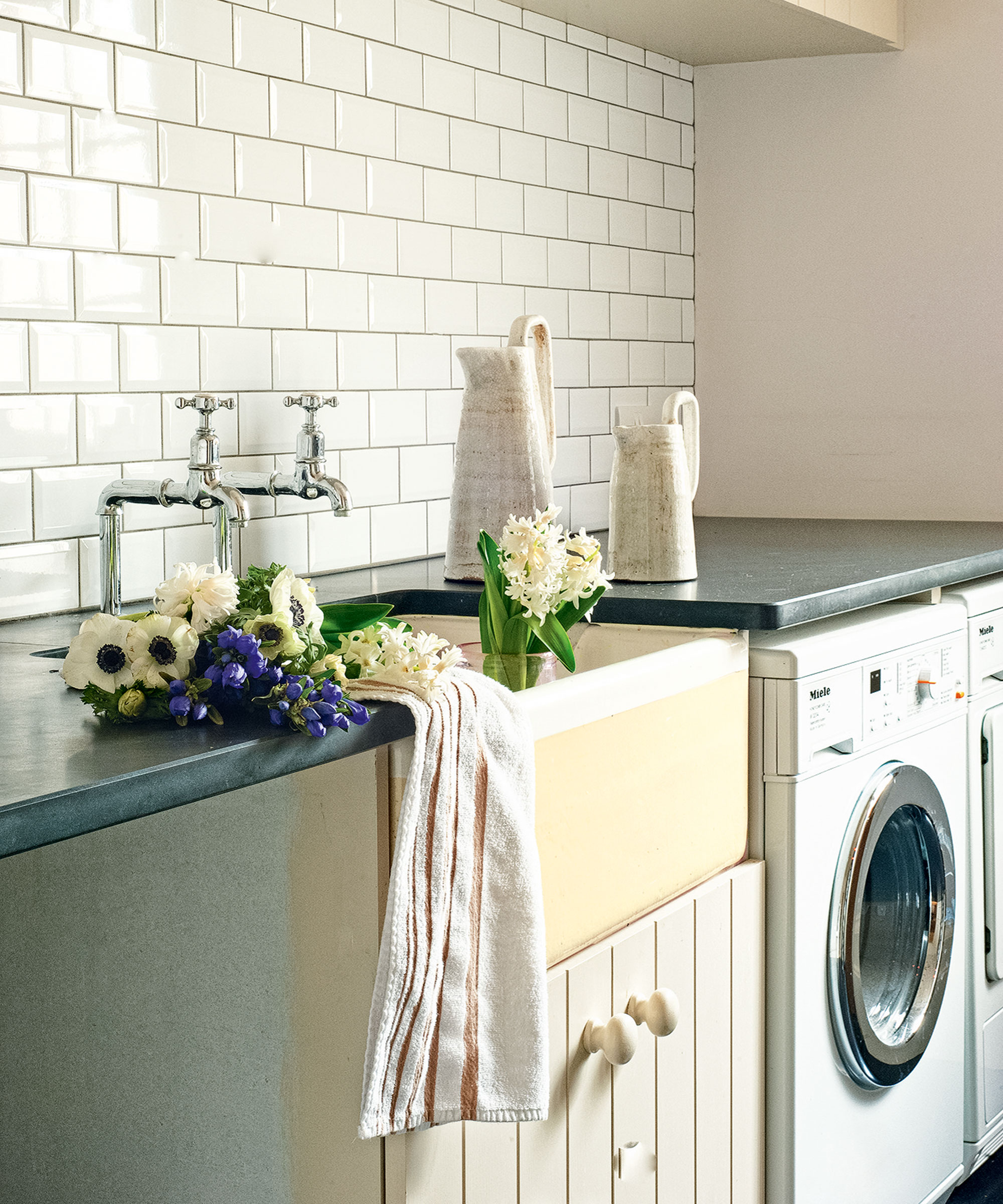
How do you make laundry less of a chore?
Like with any household chore, if you’re taking it all on yourself, it’s going to feel like a much bigger load… quite literally, when dealing with laundry. Sharing it out will save you both time and effort, as well as teach family members (both young and old!) to be responsible and look after their belongings.
‘Rather than sorting through endless piles of dirty washing, save time by separating as you go. Invest in a laundry hamper with different compartments for whites, darks, delicates, and colors, or consider buying individual hampers for each. Ensure everyone in the family knows the deal, so everyone helps out,' advises professional organizer Katherine Blackler, founder of SortMySpace.
Emma George agrees and adds: ‘keep set days to do your laundry on. Establishing two days a week for washing clothes and another just for bedding and towels can help to keep things manageable. You’re also more likely to complete the cycle of washing, drying, and putting clothes away. Not everything needs to be tackled immediately – prioritize uniforms, work clothes, sports clothes etc.’
Next, learn about how to remove smokey smells from clothing in our dedicated expert-led guide.
Sign up to the Homes & Gardens newsletter
Design expertise in your inbox – from inspiring decorating ideas and beautiful celebrity homes to practical gardening advice and shopping round-ups.
For 10 years, Tara King worked as a Content Editor in the magazine industry, before leaving to become freelance, covering interior design, wellbeing, craft and homemaking. As well as writing for Ideal Home, Style at Home, Country Homes & Interiors, Tara’s keen eye for styling combined with a passion for creating a happy – and functional – family home has led to a series of organization and cleaning features for H&G.
-
 I'm 5ft2 and this telescopic scrubber safely and easily banished mold and grime in even the hardest-to-reach areas of my bathroom in less than 15 minutes
I'm 5ft2 and this telescopic scrubber safely and easily banished mold and grime in even the hardest-to-reach areas of my bathroom in less than 15 minutesMy bathroom has never looked better thanks to this handy $16 two-in-one tool from Joseph Joseph
By Ottilie Blackhall Published
-
 Everyone is obsessed with vintage tiles right now – bring the nostalgic charm of this classic design feature into your home with our 5 design ideas
Everyone is obsessed with vintage tiles right now – bring the nostalgic charm of this classic design feature into your home with our 5 design ideasHonor the past with our favorite ways to decorate with vintage tiles, as suggested by interior design experts
By Eleanor Richardson Published
-
 6 ways to prevent mold and damp in bedrooms – expert solutions to maintain a safe sleep environment
6 ways to prevent mold and damp in bedrooms – expert solutions to maintain a safe sleep environmentDon't sleep on these six tips, experts urge
By Seraphina Di Mizzurati Published
-
 I tried the easy Reverse Advent Calendar decluttering method to clear out my home before Christmas – it's brilliant if overwhelm usually gets in your way
I tried the easy Reverse Advent Calendar decluttering method to clear out my home before Christmas – it's brilliant if overwhelm usually gets in your wayIt left my home feeling lighter with minimal effort
By Ciéra Cree Published
-
 I tried the one-in-one-out method to keep my space clutter-free and it changed my relationship with shopping for good
I tried the one-in-one-out method to keep my space clutter-free and it changed my relationship with shopping for goodI added a few caveats that made the rule work better for me
By Ciéra Cree Published
-
 8 things you should never store in a playroom and where to put them instead
8 things you should never store in a playroom and where to put them insteadRead our top tips on how to keep your playroom organized and fun at the same time
By Sophie Warren-Smith Published
-
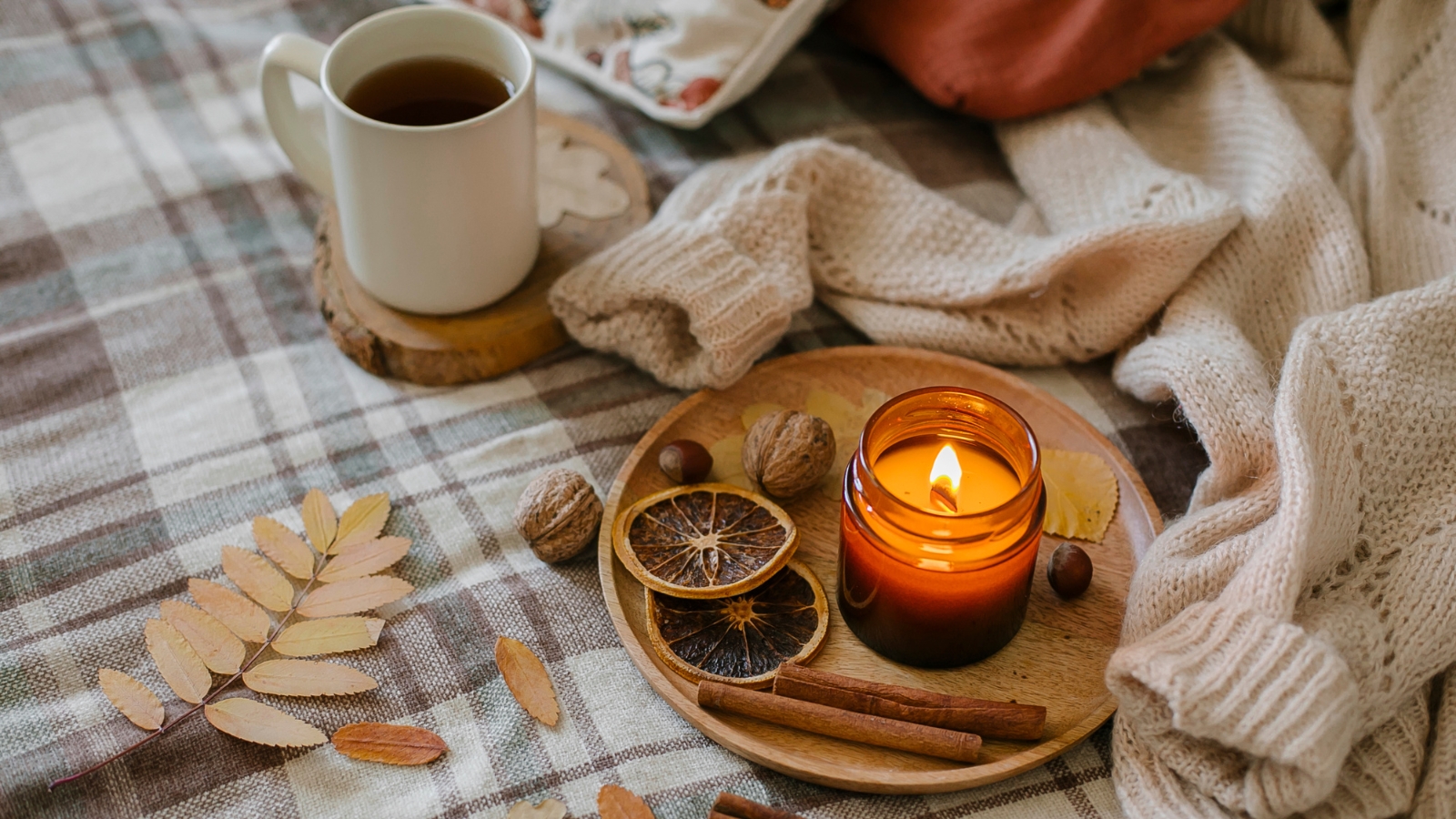 7 fall home maintenance tips experts never skip in their own properties
7 fall home maintenance tips experts never skip in their own propertiesSeven pro steps to maintain your home this fall
By Andy van Terheyden Published
-
 I’m in chronic pain and have used heating pads for 15 years to cope at home in cold weather – the best I've ever used is on sale for Amazon Prime's last day of deals
I’m in chronic pain and have used heating pads for 15 years to cope at home in cold weather – the best I've ever used is on sale for Amazon Prime's last day of dealsI've used more than 30 electric heating pads and they're my go-to for pain relief
By Punteha van Terheyden Published
-
 A professional organizer's best seasonal storage tips for living rooms – they're the key to having easy access, reduced clutter and improved functionality
A professional organizer's best seasonal storage tips for living rooms – they're the key to having easy access, reduced clutter and improved functionalityWelcome in the new season with stylish storage tips for fall
By Ottilie Blackhall Published
-
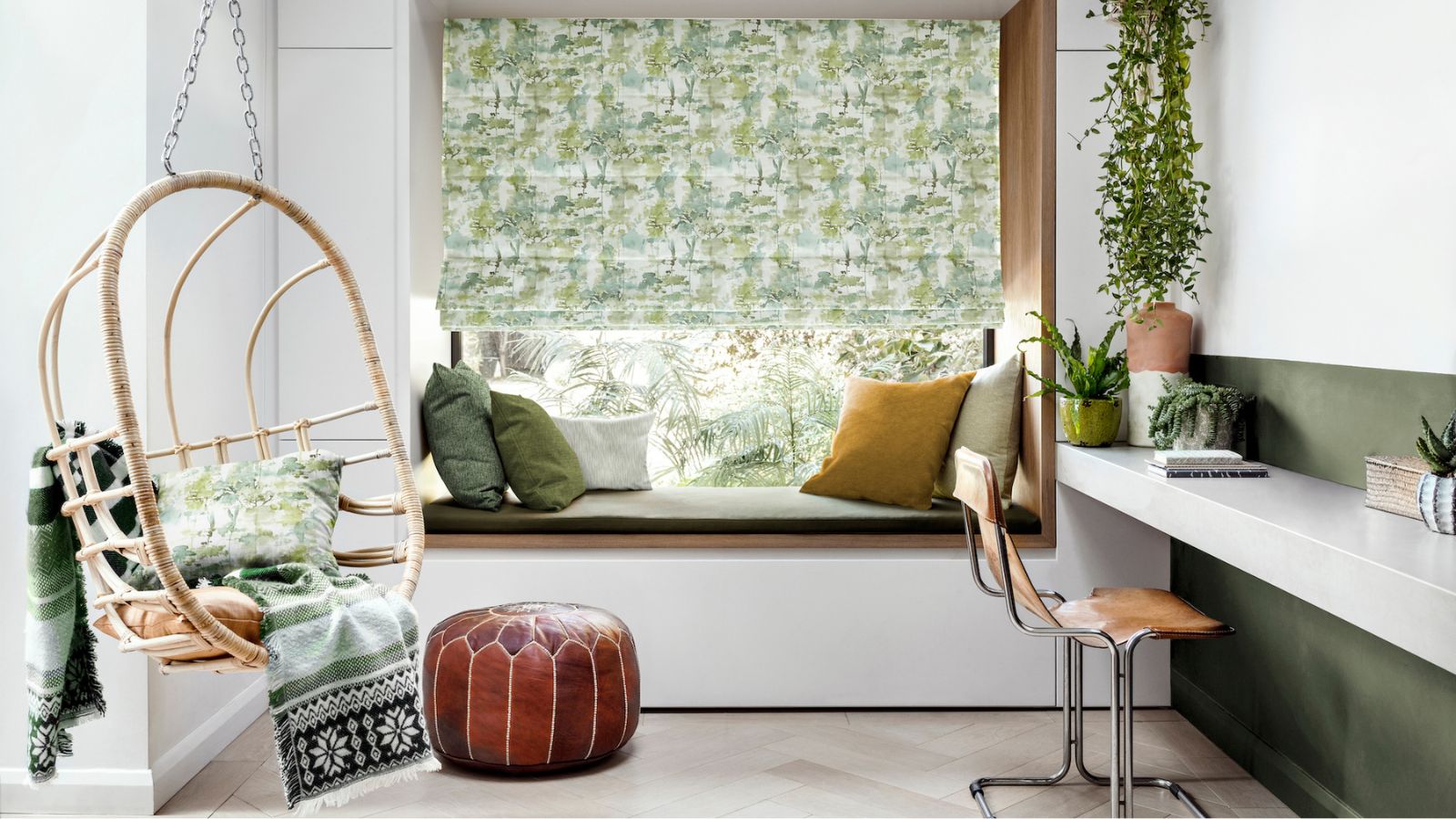 How to elevate your teen's former bedroom into a beautiful home office
How to elevate your teen's former bedroom into a beautiful home officeTips and advice from an interior designer and a professional organizer on how to transition your teen's bedroom into a home office
By Ashley Chalmers Published
